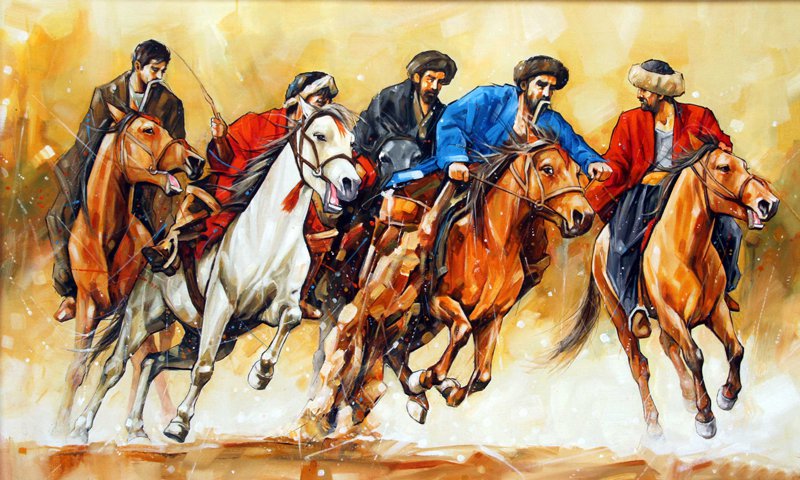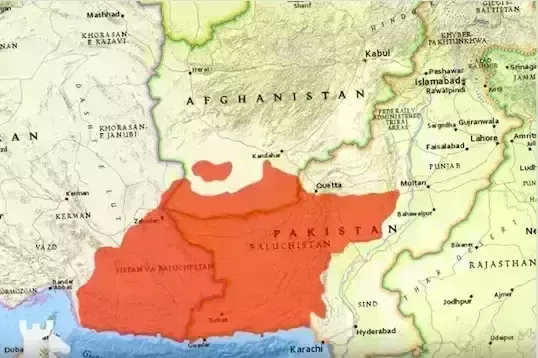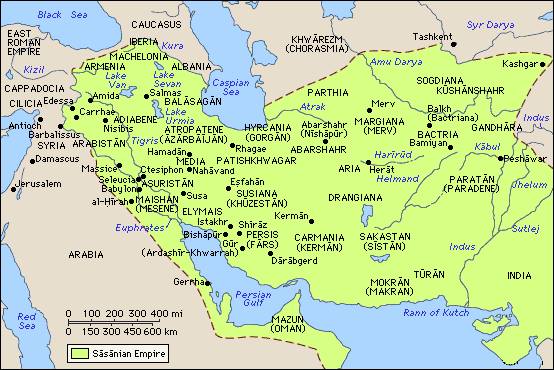Introduction

The Baloch are a group of people belonging to the Aryan race, inhabiting the area called Balochistan, which is today divided between Pakistan, Iran and India; The Baloch have their own distinct culture, language, and traditions. The total population of Baloch is 13 to 15 million people. Although there are no independent figures about Baloch population in Iran, it is approximated at 4 million Baloch. The Baloch speak Balochi and Brahui derived from the Indo-European – and Dravidian branches of language respectively. For the neighboring people, Balochistan might be nothing other than barren waste but to the Baloch, this piece of mountainous dry land is closely linked to their sense of identity in which they take utter pride.
“Balochistan is my heart, my soul, and, a cure for all conceivable pains of life.
Why should I not sacrifice, or hesitate to suffer, indignities of confinement,
When, my motherland is facing poisonous bullets”.
(Ghulam Rasul Mullā).
Origin of the word Baloch
The meaning of the word Baloch has been defined variously, and diverse explanations have been mentioned regarding the origin of the term applied to a particular ethnic group. Herzfeld (1968) believed that it is derived from Brza-vaciya, which came from Brza-vak, a Median word meaning a loud cry, in contrast to Namravak, meaning quiet and polite way of talking. Rawlinson (1873) maintained that the Baloch owe their name to Babylonian king “Belus,” which is also the name of their God. It is also believed that the word is a nickname, meaning a cockscomb. Dames (1904) believed that as the word “Baloch” in Persian means a cockscomb or crest and the Baloch troops who fought for Astyages or Kai Khusrau (585-550 BC) were wearing helmets with cockscomb crest, they got the nickname of the Baloch. While listing the warriors of Kai Khusrau, Firdausi mentioned the Baloch under the command of General Ashkash as
follows:
“Next (after Gustaham) came shrewd Ashkash, endowed with prudent heart and ready brain. His troop was from the wanderers of the Koch and Baloch with exalted cockscomb crests and very rams to fight. No one had seen their backs in battle or one of their fingers bare of armor. Their banner was a Pard with claws projecting. Ashkash felicitated Kai Khusrau at large upon the happy turn of fortune (Shahnama-e-Firdausi, 1908, pp. 33-34).”
Among the Baloch, it is generally believed that the word “Baloch,” if applied in the sense of cultural implications, manifests something magnificent, magnanimous, and powerful. Perhaps this perception on the meaning of the “Baloch” led some writers to believe that etymologically, it is made of two Sanskrit words, “Bal” and “Och.” “Bal” means strength or power, and “Och” means high or magnificent. The word “Baloch,” therefore, means very powerful and magnificent (Janmahmad, 1982). One aspect of the meaning of the word “Baloch” that could have been important in finding the origin of the Baloch had, strangely, been missed by all scholars and researchers. That is the mention of an ethnic group in the name of Balashchik (Balascik) living alongside many other ethic entities in the ancient land of Balashagan (Balashakan) between the Caspian Sea and Lake Van in the presentday Turkey and Azerbaijan. The word Baloch is most probably a rather small modification of the term Balascik. There is not much difference in the pronunciation of Balascik, Balashchik, Baloachik, or Baloch. Even today, in different parts of Balochistan, many people call the Baloch as Balochuk and Balochi as Balochiki. It is most probable that the group of tribe who were living in Balashakan was named after the region, or the region itself was named after its inhabitants, the Balashcik.
Taken from the book The Baloch and Balochistan- Naseer Dashti
About Balochistan

It comprises the Pakistani province of Balochistan, Iranian province of Sistan and Baluchestan, and the southern areas of Afghanistan including Nimruz, Helmand and Kandahar provinces. Balochistan borders Afghanistan and the Federally Administered Tribal Areas to the north, Sindh and Punjab to the east, and Persian regions to the west. South of its southern coastline, including the Makran Coast, are the Arabian Sea and the Gulf of Oman.
The Baloch landscape covers approximately 690,000 sq. km. About two hundred and eighty thousand (280,000) sq. km. of its total area is in Iran, 350,000 sq. km in Pakistan (Including the Baloch populated districts of Sindh and Punjab, which once used to be a part of greater Balochistan) and some sixty thousand sq. km. (60,000) was given by the British imperial forces to Afghanistan under the Anglo-Afghan boundary commission decision in 1896. Balochistan commands more than 900 miles of the Arabian coast line and the Persian Gulf.
Some of the earliest human civilizations emerged in Balochistan. Mehrgar one of the earliest civilization known to mankind is located in Eastern Balochistan; the Kech civilization in central Makuran dates back to 4000 BC; The Burned city near Dozaap (Zahidan), the provincial capital of Western Balochistan, dates back to 2000 BC.
The Baloch History
Migration from Aleppo
The true history of the Baloch people is a mystery till this date, there are many different interpretations of the Baloch origin. According to the Daptar Sha’ar {Chronicle of Genealogies), an ancient ballad popular among all major Baloch tribes, the Baloch and the Kurds were kindred branches of a tribe that migrated eastwards from Aleppo, in what now is Syria, shortly before the time of Christ in search of fresh pasturelands and water sources.
Daptar Sha'ar:
“Ash Halaba phadh-khayan,Go Yazida jherav-en.
Kalbala Bompur ma-nyama,Shahar Sistan munzlil-en.
Niki Badr-din dar-akhta, Naghumanen shiddat-en.
Ma-sara Merin Jalal-Han, Chhilo-chyar bolaken.
Hot Makurana nindi, Khosagh ma Kech-edh-en.
Hot, Korai awar-en, Ema Lashar-ghar-en.
Drishak, Hot, Mazar, Ego Rinda yagsar-en.(The translation by M.L. Dames),
“We are residents of Haleb (Aleppo, in Syria). We started from there, and fought battles with Yazid at Kerbala (61/680), thereafter, we moved towards Bampur. Our last destination being the towns of Sistan Our king at Sistan was Shamas-u-din, who had good relations with the Baloch. But after him, when Badr-u-din became king, he became the enemy of the Baloch. Mir Jalal Han, was then the Chief of the Baloch, he left Sistan, and led them along with forty-four tribes, towards the east of Kech (in Makran) and Harin Bunder. The Hoth tribe settled down at Makran, and Khosaa in the land of Kech (on Makran Coast). Hoth, Korai, Nohani Dodaisand Mazari tribes are a part of a Rind Baloch”.
Some believers of this ballad believe Baloch have arab ancestry they are descendents of Hazrat Ameer Hamza a paternal uncle of islamic prophet Mohammad s,aw. Baloch migrated from Aleppo Syria took part in the battle of karbala siding the sons of hazrat Ali Against yazid as baloch were soldiers of Hazrat Ali. On the other hand Balochs curls are Imitation of Spiritual Hierarchical . Prayers of al-Aqsa Mosque never shaved there poll hair. Balochs also follow the Practice of Hazrat Abraham to judge the Truth and Falsehood by moving the suspicious person on the live coal (Baloch use Specially wood of "Kaheer" (because its coal does not turns into ash within about 24 hours).
Some Arabic writers believe Kuchs and Baluchs are same by ancestry. They speak their Languages, different from Persian. During the age of Arabic Conquerors, Kuchs and Baluchs lived together and belonged to same Genealogy however, they spoke different languages and in about 680 A.D, they migrated towards Kerman in Iran and stayed there for a while with peace
Some historians maintain from the legendary ballad that the Baloch came from Halab(Aleppo) and are Semites. It is also believed that they from the old stock of Sumerians of Mesopotamia. The historians, however, mostly concern themselves in tracing the Baloch racial origin either from among the Indo-Europeans or the Semites. Neither should one object on these methods for historical research, nor doubt the fact that there had been an admixture of various people with Baloch like the Scythians, Pathians, Ashkanis, Sakas, Kushans, Huns, Turks and many others; nor contest the proposition that Baloch, culturally, were greatly influenced by Tigris-Euphrates civilization at different stages of history. Subscribers to this school of thought believe that the Baloch and Kurds were two large tribes of common origin. For whatever reasons, the Kurds decided to move towards the East by hundereds of kilometers only, while the Baloch moved thousands of kilometers eastward.
Exploring Balashagan

One Baloch historian, Naseer Dashti says the Baloch migrated eastwards towards present-day Balochistan from a place called Balashagan- which literally means country of Balash; Balashagan was a satrapy of the Sasanian Empire. Shapur I's inscription at Naqsh-e-Rostam describes the satrapy as "extending to the Caucasus mountains and the Gate of Albania or Gate of Alan", but for the most part it was located south of the lower course of the rivers Kura and the Aras, bordered on the south by Adurbadagan, and had the Caspian Sea on its east. Balashagan is also mentioned separately from Albania as a province of the empire at Shapur's inscription, which indicates that it was its own political entity even though it was subject to Albania. The monarch of Balashagan also gained the title of King under Ardashir, which would indicate it becoming a vassal. Naseer Dashti writes in his book:
"Language, cultural traditions, and geographical locations are the main factors in determining the ethnic origin of a people. On linguistic, cultural, and geographical grounds, it has been strongly established by the works of imminent Iranologists that the Baloch origin can be traced within the northwest Iranian group of tribes. Based on the enquiries, it is believed that the original homeland of the Baloch must have been in the area where other speakers of northwestern Iranian languages were living. From the rock inscriptions of Emperor Darius and Shahpur, it was established that an ethnic group called Balashchik was living in a region called Balashagan which was somewhere between Caspian Sea and Lake Van. It appears that the Baloch is the transformation of Balashchik after their expulsion or migration from Balashagan."
There are no detailed historical accounts written about Balashchiks but instead their presence and their story can be traced by learning the history of the neighboring kingdoms and empires and their confrontations with the Balashchiks. From the neighboring history it is known that the Balashchiks were oppressed people who suffered the wrath of neighboring kings and empires as they would always raise in one kind of rebellion or other. The actual year and the reason of the Baloch migration towards present-day Balochistan is still unknown.
Journey to Balochistan
Baloch dispersal from their original country of Balashagan had occurred in several waves in different times and may have caused by several factors:
The Baloch were pastoralist nomads who depended on the herds and their products. This might be possible that some of the tribes or group of tribes migrated to Sistan, Kerman, Makuran, and Turan simply as a routine way of nomadic life, as the lands in Balashagan were not sustainable anymore, and some of them settled into these areas and never went back to their original abode.
During the reign of the Medes and the Parthians when the relationships between the Baloch and the state were relatively cordial, it is possible that some of the Baloch tribes might have been transplanted peacefully to the border regions of Median and Parthian empires.
Some of the tribes fled from the ethnic or religious prosecutions of different Persian rulers or the prevailing upheavals in the region of Caspian Sea and went toward east where there was already a presence of their kinsmen. Some of the tribes were deported and resettled in different parts of the Persian Empire as was the norms of the time to deal with hostile elements.
Greetings my Baloch brother! Great and informative introduction on the baloch people. I know our people have a lot in common. Resteemed!
Downvoting a post can decrease pending rewards and make it less visible. Common reasons:
Submit
Ao brat! Yes indeed, our language, our culture, our history, we indeed do have a lot in common! Thanks for the resteem!, followed! Hoping to have many more interactions with you!
Downvoting a post can decrease pending rewards and make it less visible. Common reasons:
Submit
You're welcome! I'm looking forward to reading more of your posts and hoping to see the baloch community grow on steemit along with the Kurdish community.
Downvoting a post can decrease pending rewards and make it less visible. Common reasons:
Submit